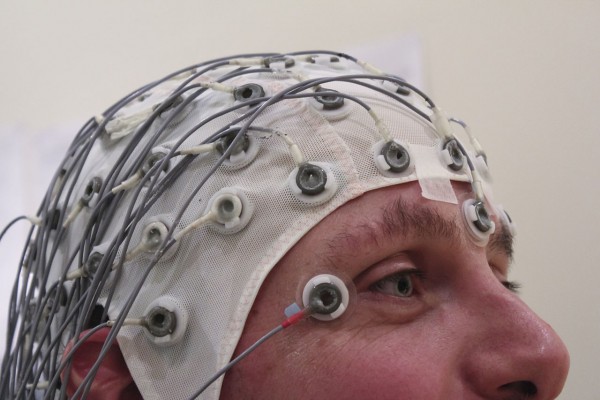
A rare, highly progressive neurodegenerative disease has become more prevalent after the rollout of COVID-19 vaccines. Prion diseases, which hollow out the brain and lead to rapid death, have increased over the last three years. According to the medical literature, many new cases have occurred after the administration of COVID-19 mRNA vaccines. Because prions rapidly destroy similar proteins types, the disease can be transmissible if an individual is exposed to organs or blood already affected by prions.
Cases of Creutzfeldt-Jakob disease increase after COVID-19 vaccination
One of the main prion diseases is called Creutzfeldt-Jakob disease (CJD). CJD was traditionally seen as an extremely rare neurological and degenerative disease, representing approximately 1 case per one million people. Traditionally, there are approximately 350 cases of sporadic CJD in the United States each year. CJD cases makeup 90 percent of all prion diseases.
In April 2023, medical researchers documented a fatal case of CJD after the 68-year-old patient received a second dose of the Pfizer-BioNTech COVID-19 vaccine. Another case documented in September 2022 involved a 59-year-old man suspected of having CJD, who developed symptoms following multiple COVID-19 vaccinations. In a third researched case, a 68-year-old woman suffered rapid memory loss, behavior changes, headaches and gait disturbance a week after COVID-19 vaccination. By June 7, 2022, the Vaccine Adverse Reporting System (VAERS) had captured 42 cases of CJD after vaccination. Sid Belzberg, an independent researcher, gathered an additional 60 reports of prion diseases after COVID vaccination on a website he’d set up to collect data on the neurological side effects of the jabs. These 60 cases came from a population of approximately 15,000 people who visited the site, suggesting an alarming trend.
We are building the infrastructure of human freedom and empowering people to be informed, healthy and aware. Explore our decentralized, peer-to-peer, uncensorable Brighteon.io free speech platform here. Learn about our free, downloadable generative AI tools at Brighteon.AI. Every purchase at HealthRangerStore.com helps fund our efforts to build and share more tools for empowering humanity with knowledge and abundance.
A 2021 paper by J. Bart Classen proposed that the spike protein in the mRNA vaccines could cause prion-like diseases, because it can bind to many known proteins and induce their misfolding into potential prions. The researchers found that the RNA sequence from the vaccine contains specific sequences that can induce TAR DNA binding protein (TDP-43) and Fused in Sarcoma (FUS) binding protein to tragically fold into their pathologic prion formations. Further research concludes that the vaccine’s spike protein contains an S1 component that may function as an amyloid and eventually form toxic aggregates. This amyloid formation ultimately leads to neurodegeneration.
Researchers warn that COVID-19 vaccines cause prion formation and can essentially spread the disease
First defined in the 1920s, prion diseases were delineated into three categories: sporadic, inherited or acquired. Most cases (90 percent) are classified as sporadic. Initial symptoms include: lack of coordination, problems with walking and balance; impaired thinking, memory and judgment; behavior changes; depression, mood swings and anxiety; confusion; insomnia, or changes in sleeping patterns; unusual sensations and changes in vision. These symptoms ultimately lead to involuntary muscle jerks and severe mental deterioration and/or dementia.
One of the faulty processes in the manufacture of the COVID-19 vaccine occurs during codon "optimization." In the COVID-19 vaccines, when uracil is replaced with synthetic methylpseudouridine, a process called frameshifting occurs, leading to a glitch in the decoding. This glitch triggers the production of off-target aberrant proteins, or prions.
Researchers warn that these prion diseases may be transmissible now, through blood and organ transplants from individuals adversely affected by mRNA vaccines. These infectious prion conditions may go on to cause ALS, front temporal lobar degeneration, Alzheimer’s disease and other neurological degenerative diseases.
A prion is essentially a “proteinaceous infectious particle.” These potentially infectious agents include a protein material that can fold in structurally distinct ways. One of the many ways it can fold actually enables it to transmit to other prion proteins – a method similar to a viral infection, but without the nucleic acids. Instead of replicating through DNA or RNA, prions have an uncanny ability to find and transfer their misfolded protein state to similar proteins. This sets off a chain reaction that damages healthy proteins and causes rapid destruction of the individual’s nervous system. Because prions can survive extreme conditions, they cannot be sterilized or destroyed by immune cells, so they are difficult to treat.
Sources include:
AnnCaseRep.com [PDF]
ScholarlyCommons.HCAHealthcare.com
SciVisionPub.com [PDF]
Please contact us for more information.


















